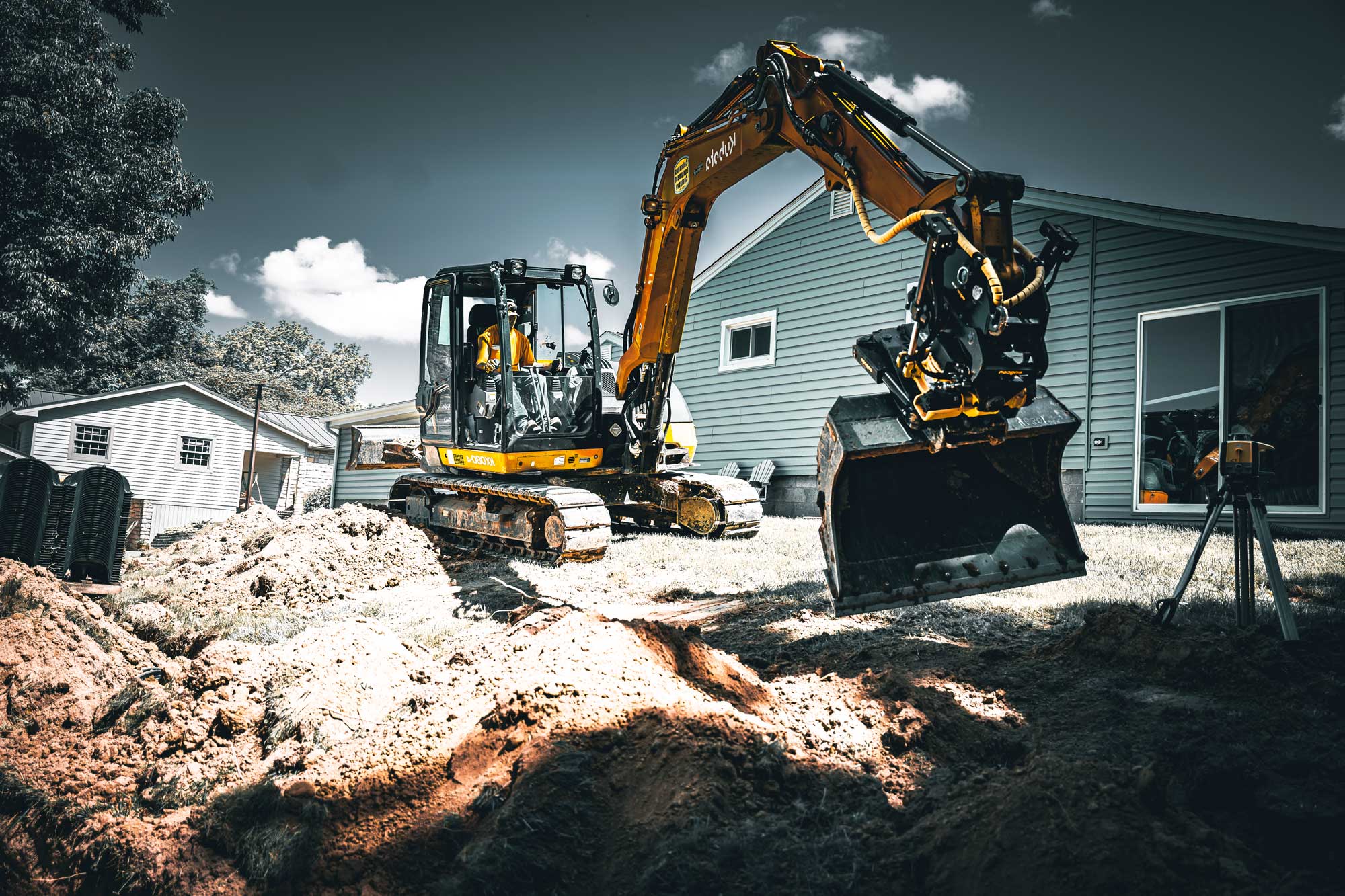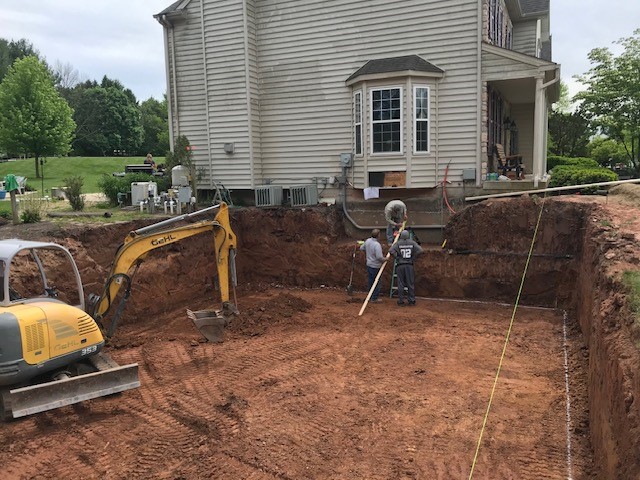Residential Excavating Ohio - Specialized Excavation for Ohio Homes
Residential Excavating Ohio - Specialized Excavation for Ohio Homes
Blog Article
Revealing the Art of Excavation: Pro Tips for Safe and Effective Excavating
As dirt is transformed and planet is moved, the ins and outs of excavation disclose themselves, demanding an eager understanding of equipment, soil structure, security protocols, and environmental factors to consider. The expertise needed to browse these aspects effectively can indicate the distinction in between a successful excavation project and a prospective disaster.
Significance of Correct Equipment
To guarantee the safety and security and effectiveness of any kind of excavation task, using the proper tools is paramount. The right tools not just enhance efficiency yet likewise minimize risks connected with digging. Excavation jobs vary in extent and intricacy, ranging from little household landscaping tasks to large-scale building endeavors. Despite the task dimension, having the appropriate equipment can make a significant difference in the outcome.
These flexible makers come in various sizes to suit various task needs. Miniature excavators are ideal for smaller sized tasks, while larger excavators deal with extra considerable tasks efficiently.
Besides excavators, other important equipment includes dump trucks, bulldozers, and plates. Unload vehicles are vital for removing and transferring excavated products, while plates are used for excavating slim and deep trenches. Excavators master tasks that call for pushing large amounts of dirt or debris. By spending in the appropriate tools, excavation projects can be finished safely, in a timely manner, and with accuracy.
Recognizing Dirt Composition
An extensive grasp of soil make-up is fundamental for performing excavation jobs with accuracy and security. Recognizing the different kinds of soil is vital as it straight impacts excavation techniques, devices choice, and overall job performance. Dirt composition typically contains 4 major parts: sand, silt, clay, and organic matter. Each component has one-of-a-kind homes that affect how dirt reacts to excavation procedures.
Sand particles are the biggest and supply great water drainage however use little communication. Silt fragments are smaller sized than sand yet bigger than clay, using modest water drainage and communication. Clay fragments are the tiniest and give high communication but poor drainage. Organic matter, such as decaying plant product, affects soil fertility and security.
Before beginning excavation, carrying out soil tests to establish its make-up and features is crucial. This info helps in choosing the suitable equipment, carrying out precaution, and establishing excavation strategies customized to the particular soil conditions - excavating ohio. By recognizing soil make-up, excavation professionals can boost job results while making sure safety and adherence to finest techniques
Precaution and Methods
Understanding dirt structure is the cornerstone whereupon safety procedures and protocols for excavation projects are developed, making certain the well-being of workers and the success of the undertaking. When it concerns safety throughout excavation, there are a number of vital measures that need to be carried out to reduce dangers and protect against crashes.
Primarily, prior to any type of excavating commences, a comprehensive examination of the site ought to be look at this website carried out to recognize any potential risks such as underground energies, unsteady dirt problems, or nearby structures that could position a danger. It is important to have a competent person oversee the excavation process to guarantee that all safety and security methods are adhered to purely.
Moreover, all employees entailed in the excavation must be correctly trained in browse around here secure excavating practices and the correct operation of devices. By adhering to these safety and security measures and protocols, excavation projects can be completed efficiently and without incident.
Effective Excavation Preparation
When beginning on an excavation task, careful planning is necessary to make sure efficiency, safety, and effective outcomes. Efficient excavation preparation involves a number of crucial steps that are critical for the smooth execution of the task. The very first step is to perform a comprehensive website assessment to determine any kind of prospective dangers, such as below ground energies or unsteady dirt problems. This information is vital for creating a thorough excavation strategy that consists of precaution and risk mitigation strategies.
Once the site analysis is total, the next step is to develop a clear timeline and schedule for the excavation tasks. This includes establishing the sequence of tasks, devices needs, and workforce allocation. Correct scheduling aids stay clear of delays and ensures that the job remains on track.

Moreover, interaction among all staff member is critical during the preparation phase. Clear regulations, regular updates, and effective sychronisation are vital for an effective excavation task. By investing time and effort in careful preparation, excavation groups can substantially enhance efficiency, decrease risks, and achieve successful results.

Managing Environmental Factors To Consider
With raising focus on environmental sustainability in building and construction methods, taking care of ecological factors to consider has become a crucial facet of excavation tasks. Excavation activities have the possible to influence the surrounding atmosphere via dirt disintegration, debris drainage, Continued environment disturbance, and contamination of water resources. To minimize these threats, it is important to carry out best practices that prioritize ecological protection.

Additionally, appropriate waste administration is crucial to stop dirt and water contamination. Applying treatments for the disposal of harmful products, recycling of waste materials, and reducing making use of dangerous chemicals can dramatically reduce the environmental influence of excavation tasks. By incorporating these practices right into excavation planning and implementation, construction firms can guarantee that their tasks are not just secure and efficient yet additionally environmentally responsible.
Verdict
Finally, mastering the art of excavation needs a detailed understanding of appropriate equipment, soil make-up, safety procedures, and effective planning. By adhering to these guidelines and thinking about environmental elements, excavations can be carried out securely and efficiently. It is vital to focus on safety and performance in every digging task to ensure successful results.
As dirt is transformed and planet is moved, the complexities of excavation expose themselves, requiring a keen understanding of equipment, dirt make-up, safety procedures, and ecological factors to consider.To ensure the safety and security and efficiency of any excavation project, making use of the ideal equipment is critical.A detailed grasp of soil composition is fundamental for performing excavation tasks with accuracy and safety. Understanding the various kinds of dirt is critical as it directly influences excavation methods, equipment choice, and general job performance. By recognizing dirt make-up, excavation professionals can improve task end results while making sure security and adherence to finest techniques.
Report this page